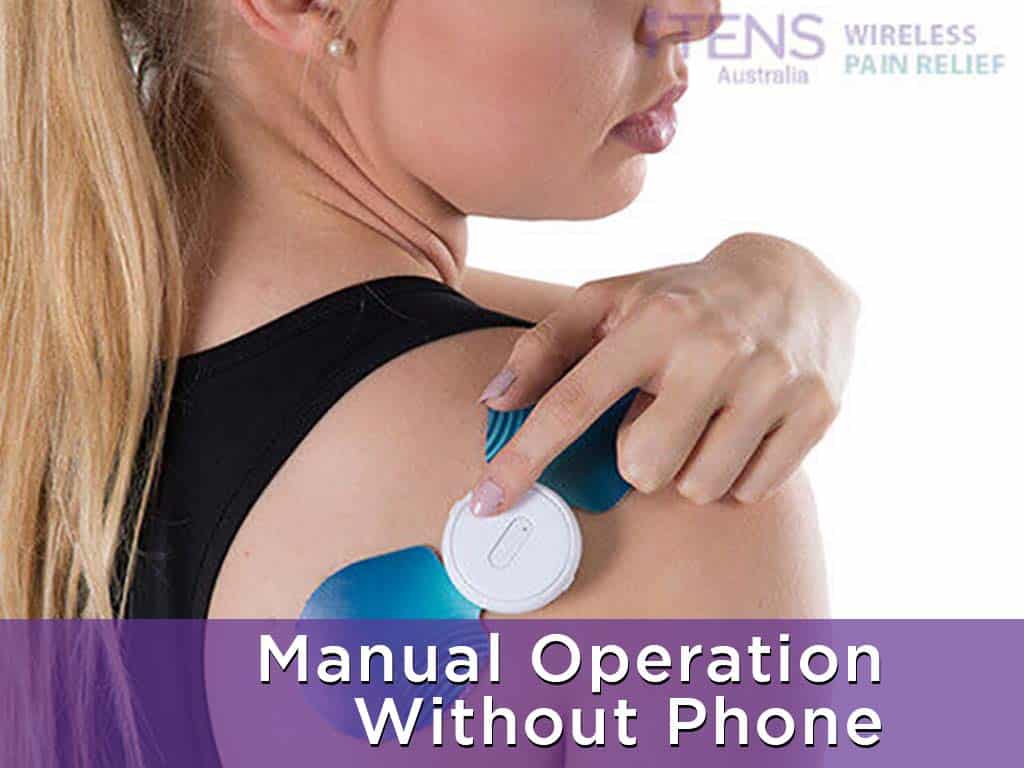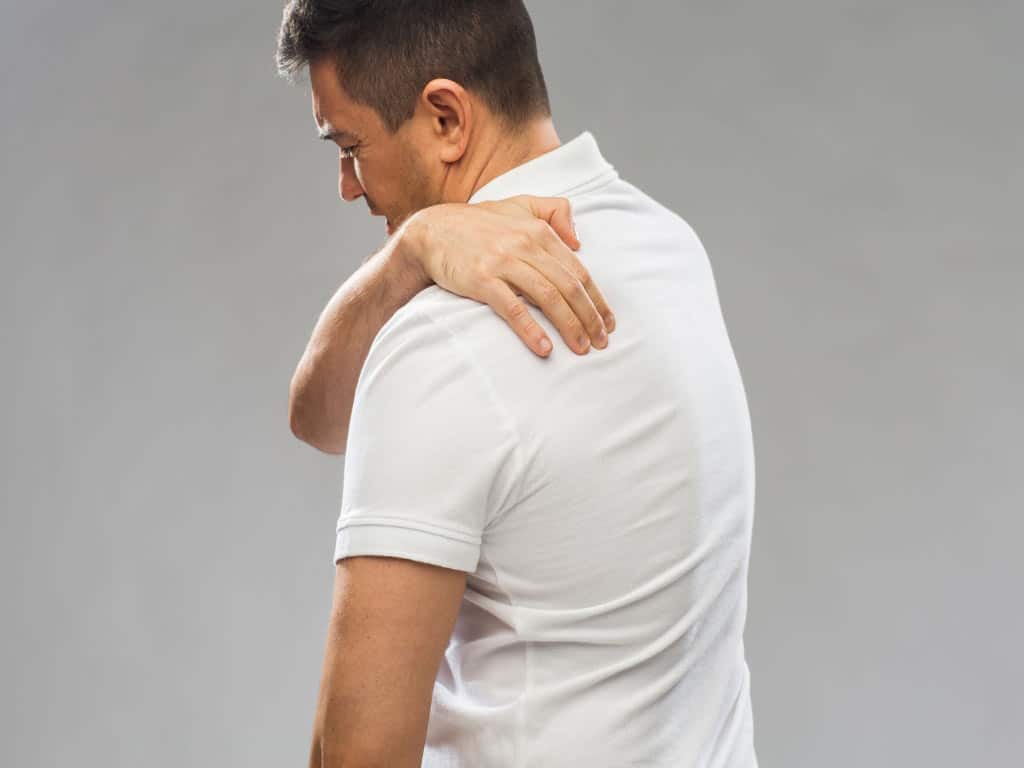
Many experience shoulder and neck pain due to poor posture and muscle strains. One option to address these aches is Transcutaneous Electrical Nerve Stimulation (TENS). A TENS machine for neck and shoulder pain uses high and low frequencies to block pain sensations from reaching the brain and to trigger endorphin production. Moreover, they are easy to use. Users must place the pad near or on the origin of the aches. For safety, individuals may consult a doctor before using TENS.
The best electrode placement for neck pain is around two inches underneath the skull, on the muscly part of the back of the neck. Meanwhile, people may attach electrodes around the shoulder joint for a rotator cuff injury. Additionally, TENS is also useful for other joint pains. It is a helpful pain management method for many acute and chronic pain conditions. This article will present how TENS works, how to use it, and some safety precautions to follow.
How a TENS Machine for Neck and Shoulder Pain Works
A TENS machine uses electrode pads to deliver mild electrical currents to the skin. A TENS machine for neck and shoulder pain uses low and high frequencies to relieve pain. Typically, a TENS unit has a frequency range of 1-150 Hz and an intensity range of 0-80 mA. These adjustable settings allow TENS therapy to relieve various types of pain. People experience several benefits by using TENS for their treatment.
Using high-frequency stimulation (50-120 Hz) triggers the spinal nerve cells to block pain signals from reaching the brain. This is the mechanism suggested in the Gate Control Theory of Pain. Its effects work immediately or within 30 minutes for many users. This makes it suitable for acute aches.
Meanwhile, low-frequency stimulation (2-10 Hz) triggers the production of endogenous opioids. Painkilling hormones called endorphins build up and relieve the pain in the target area. This process takes around 40 minutes before its effects are felt. However, its effects last hours after the session. This makes it suitable for chronic pain.
Benefits of Using the Device Over Other Treatments
There are many benefits to using TENS units for various types of pain conditions. Here are some of them:
- TENS is non-invasive and complementary to other physical therapy treatments.
- It is an alternative treatment to pain medications. It is helpful for those with allergic reactions to pain medicines.
- Using high-frequencies has a massage-like effect. It reduces muscle tension and increases blood flow.
- Endorphins help reduce inflammation, which helps improve body mobility for exercises. It also improves moods.
- TENS therapy may reduce the intensity of pain sensations over time.
- TENS machines are convenient and portable for use anytime and in various settings.

How to Use a TENS Machine for Neck and Shoulder Pain
A TENS machine for neck and shoulder pain is designed to be easy to use, even without medical supervision. The user must clean their skin with soap and water and dry it. This helps remove excess body oils and allows the adhesive to stick better. Then, they may place the electrode pads near or on the origin of the aches. Proper pad placement is crucial for effective pain relief.
When the pads are secure, the user may turn the machine on. It is best to start on the lowest settings to avoid electrical shocks or discomfort. Afterwards, they may gradually increase the settings or select a preset mode. Sessions generally last between 20 to 30 minutes. This depends on the intensity used and the condition of the individual. They may also consult a healthcare professional for advice regarding this.
Once the time elapses, the user must turn off the device. Then, they may remove the adhesive pads. Cleaning them after use may extend the lifespan of the pads. Lastly, the user may store them in a cool and dry area.
Proper Pad Placement
It is crucial to place the pads in the correct areas to experience targeted pain relief. For neck pain, users may attach the pads about two inches underneath the skull. It should be on the muscly part of the neck. Users must avoid placing the electrodes too close to the head or the throat.
For shoulder aches, it may depend on the type of pain the user is experiencing. For rotator cuff pain, attach the pads around the shoulder joint. Meanwhile, place one pad in front of the shoulder and another behind it for adhesive capsulitis or frozen shoulder.

Safety Precautions When Using a TENS Machine for Neck and Shoulder Pain
It is best to consult a healthcare professional before using a TENS machine for neck and shoulder pain. They may assess if the person suits electrotherapy devices. Some health conditions negatively react to electric stimulation. This includes those with a history of cancer, epilepsy, seizures and heart disease. Moreover, those with electrical and metal implants should refrain from using electrotherapy devices. Finally, pregnant women should refrain from using TENS before labour.
Moreover, reading the instructions provided by the device manufacturer is crucial for ensuring safety. It helps users understand how to use the device and prevent accidents. Additionally, users must stay alert and aware during TENS therapy. They should not sleep, drive, or operate heavy machinery using TENS. Individuals should also distance themselves from water to avoid electrical shocks during treatment.
Furthermore, people should not overuse the machine. Overusing high frequencies may lead to skin irritation, mild burns, and nerve and muscle damage. Additionally, it may lead to developing a tolerance for electric stimulation, which lessens the effectiveness of the treatment. Lastly, avoid irritated, infected, or broken skin.
When to See a Doctor
People should seek medical attention if they experience worsening pain during or after the session. It might indicate an underlying health condition that reacts negatively to electric currents. Another reason to seek medical attention is if they experience device malfunctions from implants such as pacemakers. There can be severe consequences if the malfunction is not addressed immediately.
Moreover, if they experience excessive skin irritation, muscle twitching, or tingling sensations, they should lower the intensity settings or stop the session. If the twitching or tingling sensation does not cease after some time, they may need medical help.
Conclusion
A TENS machine for neck and shoulder pain is a drug-free pain management method that is safe for many to use. It helps people avoid the adverse effects of pain medication by reducing or replacing their intake. Moreover, it is easy to use in various settings. People may place the electrodes on muscly areas near the origin of the aches to get targeted relief. It uses high and low-frequency stimulation to trigger the body into relieving pain.
Furthermore, TENS therapy is complementary to other recovery methods. Many devices have treatment programs tailored for specific body parts and conditions. However, it is crucial to consult a medical professional before using TENS. They may assess if TENS suits the condition of the patient. Moreover, they may advise on the regularity, duration, and frequency of the session. One good prospect for a personal TENS device is the iTENS from iTENS Australia.




















